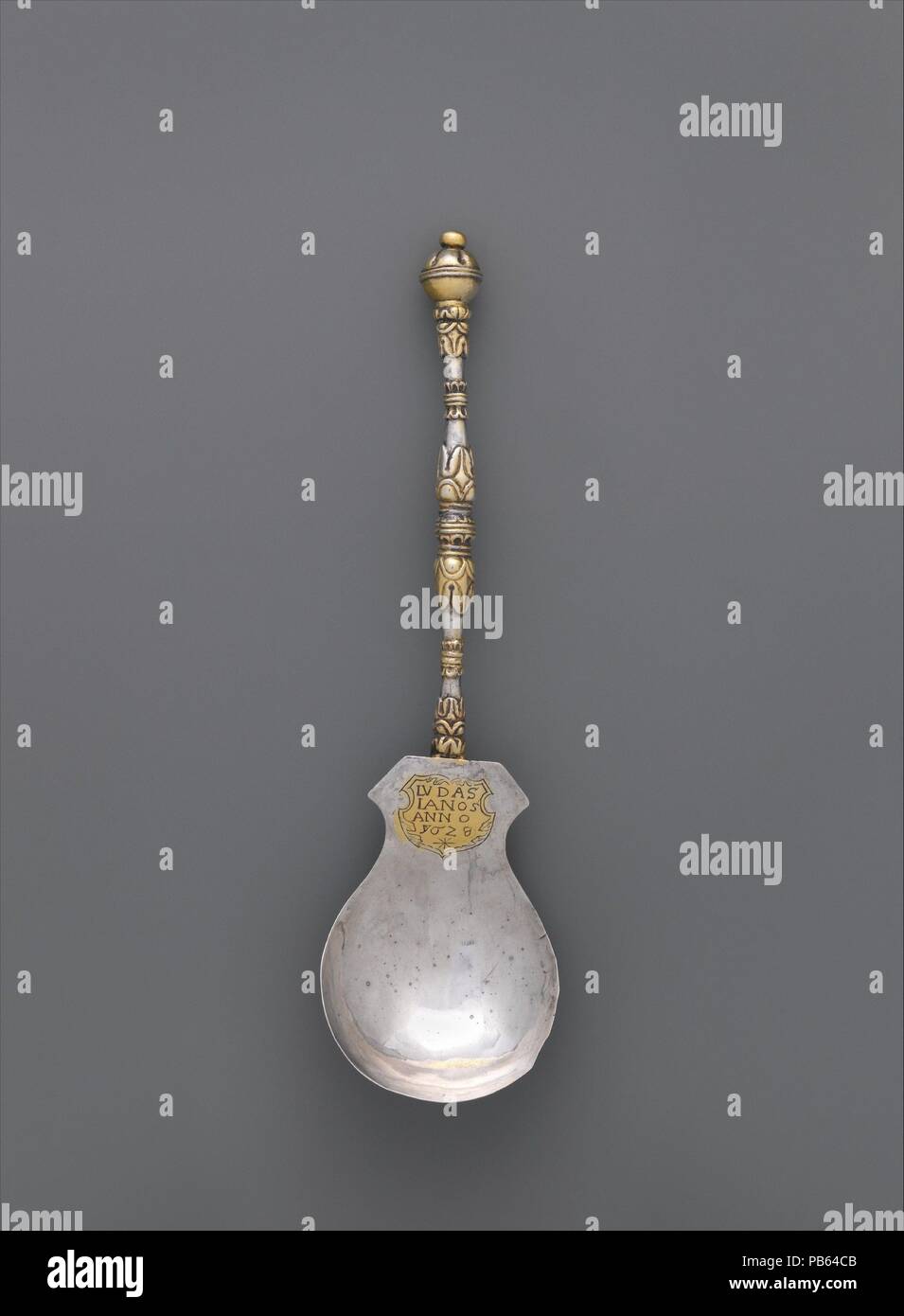Spoon. Culture: possibly Hungarian. Dimensions: Length: 7 13/16 in. (19.8 cm). Date: mid-16th century. The carefully applied partial gilding and the elaborate leaf-shaped handle of this spoon reflect the international court style of the mid-sixteenth century. While, from the point of view of its style, it could have been produced almost anywhere in Central Europe or Northern Italy, the inscription in Hungarian suggests it may have been made in the region. However the dedication in Hungarian from 1628 was engraved later. Literature Judit H. Kolba. <i>Hungarian Silver: The Nicolas M. Salgo Co

Image details
Contributor:
Album / Alamy Stock PhotoImage ID:
PB64CBFile size:
37.9 MB (978.6 KB Compressed download)Releases:
Model - no | Property - noDo I need a release?Dimensions:
3120 x 4245 px | 26.4 x 35.9 cm | 10.4 x 14.2 inches | 300dpiPhotographer:
AlbumMore information:
This image could have imperfections as it’s either historical or reportage.
Spoon. Culture: possibly Hungarian. Dimensions: Length: 7 13/16 in. (19.8 cm). Date: mid-16th century. The carefully applied partial gilding and the elaborate leaf-shaped handle of this spoon reflect the international court style of the mid-sixteenth century. While, from the point of view of its style, it could have been produced almost anywhere in Central Europe or Northern Italy, the inscription in Hungarian suggests it may have been made in the region. However the dedication in Hungarian from 1628 was engraved later. Literature Judit H. Kolba. <i>Hungarian Silver: The Nicolas M. Salgo Collection</i>. London, 1996, p. 139, no. 117. [Wolfram Koeppe 2015]. Museum: Metropolitan Museum of Art, New York, USA.